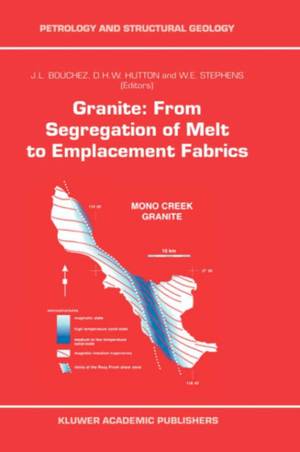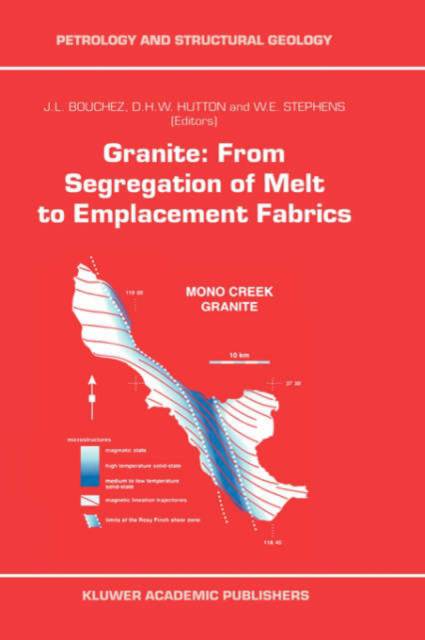
Door een staking bij bpost kan je online bestelling op dit moment iets langer onderweg zijn dan voorzien. Dringend iets nodig? Onze winkels ontvangen jou met open armen!
- Afhalen na 1 uur in een winkel met voorraad
- Gratis thuislevering in België vanaf € 30
- Ruim aanbod met 7 miljoen producten
Door een staking bij bpost kan je online bestelling op dit moment iets langer onderweg zijn dan voorzien. Dringend iets nodig? Onze winkels ontvangen jou met open armen!
- Afhalen na 1 uur in een winkel met voorraad
- Gratis thuislevering in België vanaf € 30
- Ruim aanbod met 7 miljoen producten
Zoeken
Granite: From Segregation of Melt to Emplacement Fabrics
€ 209,95
+ 419 punten
Omschrijving
viii debate of those earlier days has been beautifully summarized by H. H. Read in his famous "Granite Controversy" (1957). Read's formulation of the controversy occurred at the time when geochemistry was as a new and powerful tool. The new techniques opened era during which emerging an granites were considered mainly from this new viewpoint. Geochemical signatures have shown that mantle and crustal origins for granites were both possible, but the debate on how and why granites are emplaced did not progress much. Meanwhile, structural geology was essentially geometrical and mechanistic. In the early 70's, the structural approach began to widen to include solid state physics and fluid dynamics. Detailed structural maps of granitic bodies were again published, mainly in France, and analysed in terms of magmatic and plastic flow. The senior editor of this volume and his students deserve much of the credit for this new development. Via microstructural and petrofabric studies, they were able to discriminate between strain in the presence of residual melt or in the solid-state, and, by systematically measuring magnetic fabrics (AMS), they have been able to map magmatic foliations and lineations in ever finer detail, using the internal markers within granites coming from different tectonic environments. The traditional debate has been shifted anew. The burning question now seems to be how the necessary, large-scale or local, crustal extension required for granite emplacement can be obtained.
Specificaties
Betrokkenen
- Uitgeverij:
Inhoud
- Aantal bladzijden:
- 358
- Taal:
- Engels
- Reeks:
- Reeksnummer:
- nr. 8
Eigenschappen
- Productcode (EAN):
- 9780792344605
- Verschijningsdatum:
- 31/03/1997
- Uitvoering:
- Hardcover
- Formaat:
- Genaaid
- Afmetingen:
- 156 mm x 234 mm
- Gewicht:
- 693 g

Alleen bij Standaard Boekhandel
+ 419 punten op je klantenkaart van Standaard Boekhandel
Beoordelingen
We publiceren alleen reviews die voldoen aan de voorwaarden voor reviews. Bekijk onze voorwaarden voor reviews.










